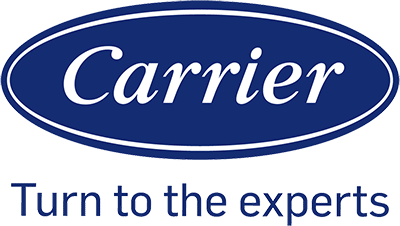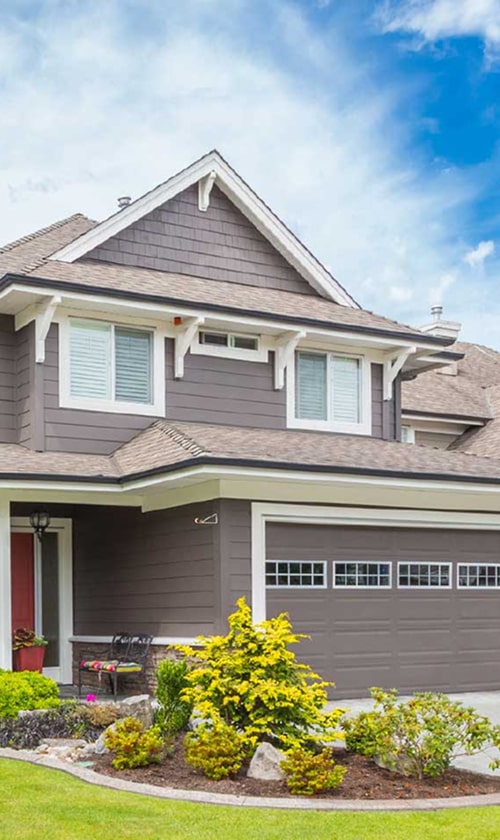Understanding Central Air Conditioning
Central air conditioning systems use a network of ducts to cool our whole home, not just one room. These systems include three major parts: the compressor, the condenser, and the evaporator coil. Central units are more efficient for large spaces than using several window units.
How Central HVAC Systems Work
Central air conditioning is part of our home’s larger HVAC system. It moves cool air through ducts and vents, making sure every room gets cooled evenly.
With this system, warm air from inside our home is pulled into the HVAC unit through return ducts. The air passes over the cold evaporator coil, which removes heat and humidity. Cooler air is then sent back into our rooms through supply ducts.
This process keeps indoor temperatures steady. A central air unit, such as those from Lennox, works best in homes with good ductwork. We control the system using a thermostat, setting the temperature for comfort and energy savings.
Key Components: Compressor, Condenser, and Evaporator Coil
A central air conditioning system has three main components:
- Compressor: Squeezes refrigerant gas so it can release heat.
- Condenser: Located outside, it lets hot refrigerant release heat into the outdoor air.
- Evaporator Coil: Sits inside by the furnace or air handler. It cools the air by absorbing heat from inside our home.
The cycle works like this: The compressor pumps the refrigerant to the condenser where it cools and changes from gas to liquid. It then moves to the evaporator coil where it absorbs indoor heat, turning back into a gas. Good maintenance of these parts helps our HVAC system run smoothly year after year.
Differences Between Central Air and Window Units
Central air conditioning cools the entire home using hidden ducts and a single main system. Window units can only cool the room they are installed in.
| Feature | Central Air | Window Units |
|---|---|---|
| Coverage | Whole home | Single room |
| Installation | Professional | DIY or simple |
| Noise Level | Lower indoors | Often louder |
| Energy Efficiency | Higher (large) | Lower (per room) |
| Appearance | Hidden, clean | Visible, bulky |
For large spaces, a central HVAC system is more efficient and uses fewer individual units. Brands like Lennox focus on central systems for energy savings and comfort across all rooms in our house.
Factors to Consider Before Upgrading

Upgrading to central air conditioning can improve comfort if we make informed decisions. Choosing the right system means looking closely at our ductwork, energy use, bills, and indoor air quality.
Assessing Existing Ductwork and Home Insulation
Ductwork is the path that carries cooled air through our home. Any leaks, old joints, or poor designs in existing duct work can cause uneven temperatures and wasted energy. Before upgrading, we should have our ductwork inspected for leaks or damage.
If our duct work is missing or in bad shape, it might need to be fixed or replaced, which can add to the cost. Good home insulation also keeps cool air from escaping. If our home insulation is poor, even the best central AC might struggle to keep rooms cold.
It helps to check spaces like attics and crawlspaces for gaps. Fixing ductwork and adding insulation can make a big difference in how our new air conditioner performs.
Calculating Energy Efficiency and SEER Ratings
When we look at new central air systems, one of the most important numbers is the SEER rating. SEER stands for Seasonal Energy Efficiency Ratio. The higher the SEER, the less energy the unit needs to cool our home.
Many new systems now have SEER ratings of 14 to 20 or higher. Older systems may only rate at 8 or 10. Upgrading means we can pick models with higher energy efficiency, which could mean lower electricity use.
We should compare different models before making our choice. Here’s a quick table to help:
| SEER Rating | Energy Use | Typical System Age |
|---|---|---|
| 8 – 10 | High | 15+ years old |
| 13 – 15 | Medium | Modern baseline |
| 16 + | Low | High efficiency |
Potential Energy Savings and Impact on Energy Bills
A more efficient central air system can help lower our energy bills in the long run. Replacing an old, inefficient unit with a higher-SEER model often leads to energy savings, especially during hot summer months.
Energy savings depend on factors like our local utility rates, size of our home, and how often we use AC. Upgrading home insulation and sealing air leaks with our new system can further reduce costs.
We should ask for an estimated yearly energy bill comparison from our HVAC contractor. Some systems also come with smart thermostats, which allow us to fine-tune cooling and cut down on extra usage.
Improving Indoor Air Quality and Air Filter Selection
Central air conditioning can help us control indoor air quality. Choosing the right air filter traps more dust, allergens and pollutants before they circulate in our home.
Filters come in different types, such as:
- Fiberglass: Low-cost, basic
- Pleated: Traps more particles
- HEPA: Removes tiny allergens and pollutants
It’s important to check filter size and use one that fits our system. Systems with advanced air filtration can help reduce allergies and asthma triggers. We should plan to replace or clean filters on a regular basis to keep our air fresh and healthy.
Upgrade Process and Installation Steps

Upgrading to central air conditioning involves careful planning and working with experienced professionals. We need to select the right system and understand what the installation will look like for our home or building.
Choosing the Right Central Air Conditioning Unit
When picking a central air conditioning unit, we look at our home size, layout, and current ductwork. Larger spaces may need higher-capacity units, while smaller homes can use something more compact. It’s smart to check for energy efficiency ratings like SEER, which tells us how much energy the unit uses.
We should compare features like programmable thermostats, variable-speed fans, and flexibility for zoning different rooms. Some new units also offer smart home compatibility.
For new construction, builders can design the system from scratch to fit our needs. For existing homes, we have to make sure the system fits with what’s already in place.
We should also ask about rebates and energy-saving programs. These can lower our upfront costs and support long-term savings.
Working With a Qualified HVAC Contractor
It’s important to work with a qualified HVAC contractor to handle the installation. We should check their experience, certifications, and references. A reliable contractor will inspect our home, measure the space, and help choose a system that fits our needs.
The contractor will give us a detailed estimate and explain the installation steps. We’ll be told if upgrades to our electrical system or ductwork are needed.
We should review the contract carefully. It’s also helpful if the contractor can assist with manufacturer rebates or utility rebate programs.
Keeping an open line of communication ensures a smoother process. We should always ask questions if we’re unsure about any part of the installation.
What to Expect During Installation
During installation, we’ll see workers removing old equipment and setting up the new central air conditioning unit. If our home is older, they may have to add or repair ductwork. This can take a few days, depending on the complexity.
We might hear some noise and see workers moving equipment in and out. The contractor will need access to different parts of our house, including attics or crawl spaces.
Once the new system is in place, the crew will test everything. They’ll show us how to use the new controls and check that all rooms cool evenly. At the end, we should receive paperwork on warranties and any maintenance tips to keep our new system running well.
Post-Installation Best Practices
Taking care of our new central air system helps it last longer, keeps it efficient, and saves us money. Regular maintenance and smart use can also lower our impact on the environment.
HVAC Maintenance and Duct Cleaning
Keeping up with HVAC maintenance is important. We should check our system filters every month and replace them when they look dirty, usually every 1-3 months. Clean filters let air flow better and help the system work smoothly.
A professional should inspect our HVAC unit at least once a year. This usually includes checking refrigerant levels, cleaning the coils, and inspecting the thermostat. These steps can prevent costly breakdowns.
Duct cleaning is also important. Dust, mold, and allergens can build up in the ducts, making our air quality worse. We should hire a certified technician to clean our ducts every 3-5 years, especially if we notice dust coming from the vents or a musty smell.
| Task | Frequency |
|---|---|
| Change Filters | Every 1-3 months |
| Professional Tune-Up | Every year |
| Duct Cleaning | Every 3-5 years |
Optimizing Climate Control for Maximum Comfort
We can use our central air system more effectively by setting the thermostat to a comfortable but energy-saving temperature. For summer, 78°F (26°C) is usually a good target when we are home. At night or when we aren’t at home, raising the temperature by 7-10 degrees can save energy.
Installing a programmable or smart thermostat helps automate these changes. This way, we don’t forget to adjust the settings. Closing curtains or blinds during the hottest part of the day also keeps rooms cooler.
Zoning systems let us control temperatures in different parts of the house. If certain rooms feel too hot or cold, we can talk to our installer about adding more vents or adjusting dampers for better climate control.
Reducing Carbon Footprint With Cost-Effective Solutions
Lowering our carbon footprint means making choices that cut down on wasted energy. The easiest way is by using Energy Star certified HVAC equipment, as it uses less electricity.
We can seal any leaks in our windows, doors, and ducts to keep cool air in. Weatherstripping and caulk are inexpensive, simple tools for this job. Ceiling fans can also help by spreading cool air, allowing us to set the thermostat higher without losing comfort.
Regular system maintenance, like cleaning and filter changes, also makes our HVAC system use less energy, lowering both cost and emissions. We should also consider upgrading older systems to newer, more efficient models when it makes sense for our budget.
Long-Term Benefits of Central Air Conditioning
Central air conditioning offers more than just comfort on hot days. It supports a healthier home, saves money through smarter energy use, and can make our property more valuable.
Enhancing Property Value
Adding central air conditioning is a feature that most homebuyers find attractive. Many people consider it a must-have when searching for a new home, especially in warmer climates or during the summer months.
A home with central air can be easier to sell and often commands a higher selling price compared to similar homes without it. According to real estate studies, properties equipped with central air conditioning tend to stay on the market for less time.
Quick Facts:
| Feature | Impact on Value |
|---|---|
| Central Air Conditioning | +2% to +10% (varies) |
| Window Units | Usually no value impact |
By installing a central air system, we may see a return on investment that benefits us if we choose to sell or rent our home.
Sustained Energy Efficiency Over Time
Modern central air systems are designed to use energy more wisely. They usually have better SEER (Seasonal Energy Efficiency Ratio) ratings, which means they cool our homes using less electricity compared to older units or window air conditioners.
Many systems include programmable thermostats and zoning features to reduce waste. These let us set schedules or control which rooms get cooled. Over time, lower monthly utility bills can add up, helping us save money year after year.
Here are a few important benefits of energy-efficient central air:
- Reduced power consumption
- Lower greenhouse gas emissions
- Less maintenance due to updated technology
With proper maintenance, these systems keep working at a high level. Regular filter changes and annual inspections will ensure we keep seeing energy savings in the long term.
Health Impact: Minimizing Allergens and Pollutants
Central air conditioning systems filter the air as they cool it. They often use filters that trap dust, pollen, and other indoor allergens before air moves through our home.
A well-maintained system helps lower the presence of mold spores, pet dander, and even smoke particles. By circulating and cleaning indoor air, central air can be especially helpful for people with asthma or allergies.
We should remember to replace or clean filters as recommended. This simple step ensures the system continues to catch pollutants and keeps indoor air healthier for everyone. For families, this benefit can make a noticeable difference in comfort and well-being.




